Often described as a trek which takes you to the nearest heaven, Bumdra Trek is one of the trekking activities which unravel what Bhutan has to offer scenically and adventurously to visitors. Trek which starts from Sangachoekor valley in Paro and end while descending along Taktsang (tigers nest) also in Paro is one route which is best to start your trekking adventure in whole Bhutan. Although the trekking is solely in Paro, the tour also includes sightseeing in Thimphu (capital), Wangdue Phodrang and warmer Punakha valley.
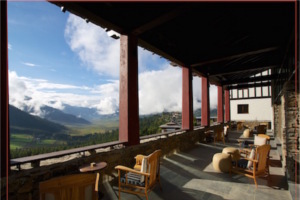
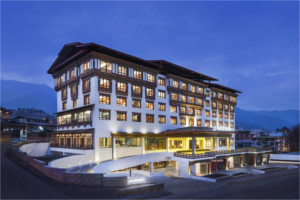
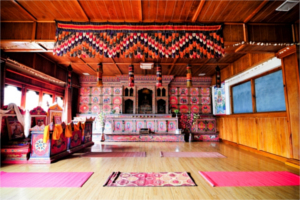
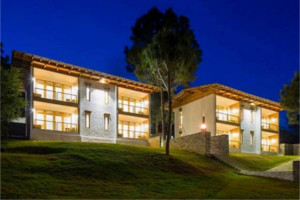
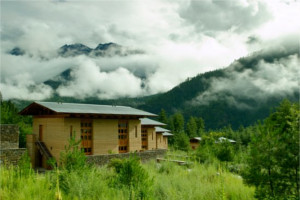
Welcome reception by our representative at the Paro International Airport. Drive for about 40 km to Thimphu (Capital). Visit around the town in the evening.
Overnight at Paro.
For acclimatization before the trek, take initial 4 days to visit the western districts of Bhutan.
Breakfast
Visit the National Memorial Chorten (Stupa), built in memory of the 3rd King of Bhutan. Visit the Art School and Changangkha Lhakhang (a temple built in 12th century by a Tibetan saint).
Lunch
Visit the National Takin Reserve Center to see Takin, the national animal of Bhutan and Trashichhodzong (fortress of glorious religion). Trashichhodzong in its current form was completed in 1968 and it houses the throne room of His Majesty the King of Bhutan. It is also a center of monastic body and houses main secretariat building. The majestic Dzong located along the Wangchu (Thimphu River) has a Tendrel Thang which is the venue for Thimphu Dromchoe and Thimphu Tsechu, the annual Thimphu Festival where thousands of people fill the courtyard to witness the mask dances, traditional dances, and many more.
Visit Semtokha Dzong, five miles from main Thimphu town, the Dzong is considered to be the first ever built by Zhabdrung Ngawang Namgyel in 1629, therefore the oldest fortress in Bhutan. Located on a ridge overlooking the entire valley, the Dzong houses a chapel for protective deities Yeshe Goenpo (Mahakala) and Palden Lhamo of Bhutan.
Visit Buddha Dordenma, the largest standing Buddha Statue in the world. Buddha Dordenma is 54 meters (177 ft) tall, one of the largest Buddha Shakyamuni statue in the world, fulfilling a prophecy that mentioned a large statue of either Guru Padmasambhava, Buddha or of a (Vajrakilaya) Phurba would be built in the region to bestow blessings, peace, and happiness on the world, the statue erection was started in 2006 and completed in 2015. The statue is mentioned in the ancient Terma of Guru Padmasambhava himself dated from approximately the sixth century, the prophesized Terma was recovered some 672 years ago by Terton Dorje Lingpa (1346) and 104 years and after 568 years ago by Terton Pema Lingpa.
Also visit Folk Heritage museum, Royal Textile Museum and craft markets.
Stop at Dochula pass 3100m on route to Punakha from Thimphu. Dochula pass is one of the famous landmarks in Bhutan from which one can sight the Himalayan Range of Bhutan on clear winter days. The place is adorned with Druk Wangyel Chorten, 108 stupas built to honor the 4th king of Bhutan and bring peace to the region. The stupas were built under the patronage of Ashi Dorji Wangmo Wangchuck.
Descend to Punakha Valley (1280m).
Punakha valley served as the capital of Bhutan till 1955 until it was shifted to Thimphu. The Punakha Dzong is still the winter seat of Je Khenpo (Chief Abbot) of the monastic body as the place has a temperate climate with Phochu and Mochu Rivers flowing through the fertile fields of the valley.
Visit Punakha Dzong.
Punakha Dzong or Pungthang Dewa Chenpai Phodrang, the palace of bliss was built in 1937 by Zhabdrung Ngawang Namgyel. The second oldest Dzong is religiously and architecturally significant to Bhutanese as it houses several sacred relics, scriptures, statues and is the place where the first king of Bhutan was crowned in 1907. Punakha Dzong is also famous for Punakha Drupchen where the 17th-century battle scene with Tibetan invaders are recreated and is followed by Punakha Tsechu where grand Thongdrel of Guru Rinpoche is unfurled with costumed mask dances and rituals.
Visit Khamsum Yulley Namgyel Chorten.
The eminent Monastery which is also referred as Punakha Zangdopelri was built with the sponsorship of her Majesty the Queen Mother Ashi Tshering Yangdon Wangchuck under the guidance of Dilgo Khyentse Rinpoche and Lam Sonam Zangpo to bring peace in the world. The short hike up to the Lhakhang along the paddy fields is one of the most scenic short hikes one can take and the view from the top of the Lhakhang is often described as picturesque, breathtaking and enriching by the visitors.
Photography: Anytime.
Overnight at Punakha.
Drive back to Paro from Punakha.
Paro is at altitude 7000 feet or 2133m. Paro valley is a small yet beautiful home to many of Bhutan’s oldest monasteries and temples. The country’s only international airport is in Paro. The valley is also home to mount Jhomolhari (7300 meters), second highest unclimbed mountain in the world situated at the northern end of the valley whose glacial water forms the Paachu, the main river flowing through the valley.
Visit Ta Dzong, the National Museum. It was originally built as a watchtower in 1649, strategically located overlooking the Rinpung Dzong and the Paro valley. The watchtower was renovated in 1968 and transformed into national museum. The round shaped structure houses collection of Thangkas, 3D map of Bhutan, egg believed to be laid by a mule, iron links from Iron Bridge at Tamchog and many ancient and modern artifacts.
Note: Photography and videography are not allowed inside the museum.
Visit Rinpung Dzong, the administrative and religious center of Paro Dzongkhag (district). The fortress name translates to “Fortress on a Heap of Jewel” and has long history of having defended Tibetan invasion through the site.
The trek route is from Sangachoekor Buddhist College (2300m) to a yak pasture below Bumdra Monastery (3800m).
Drive to Sangachoekor Buddhist College (starting point of the trek). While ponies being loaded, pay a visit to the Buddhist College.
Start a steep ascends over a ridge to a clearing adorned with colorful prayer flags. The site offers a beautiful view of Paro valley below.
Continue the hike for about 1-2 hours to reach Chhoe Chhoe Tse Lhakhang, which nestles at the side of a mountain. Another few hour hikes with steep ascend through ruins and prayer flags until a wide meadow with sacred stupas and fluttering prayer flags. Visit the Bumdra monastery (The Cave of a Thousand Prayers) and chose to either climb up the northern peak to enjoy the majestic view of Himalayan range.
Overnight at the camp.
Early breakfast.
Descend into the ancient pine and rhododendron forests on a well-trodden zig-zag trail across mountainside temples till the gardens of Zangdopelri (Heaven on Earth) from where the imposing Taktsang Monastery (Tigers nest monastery) is just straight down the edge.
Descend further for an hour till Taktsang Monastery’s entry gate. Taktsang Monastery (or Tiger’s Nest) is the most recognizable sites in Bhutan. Built precariously on a hillside cliff, it sits more than 10,000 feet above sea level. Accessible only by foot and built over the caves where Guru Padmasambhava meditated in for three years, the Taktsang Monastery is one of the most sacred sites in Bhutan.
Further, descend down to the Paro valley.
Overnight at Paro.
daily tariff:USD 250 Per person per night
surcharges:
Solo Traveller: USD 40 per night
Dual Traveller: USD 30 per person per night
Three travellers and above: surcharges not applicable
Visa fees: One time payment of USD 40 per person.
daily tariff:USD 200 Per person per night
surcharges:
Solo Traveller: USD 40 per night
Dual Traveller: USD 30 per person per night
Three travellers and above: surcharges not applicable
Visa fees: One time payment of USD 40 per person.
A minimum of 3 star accommodation (4 & 5 star may require an additional premium).
All meals
A licensed Bhutanese tour guide for the extent of your stay
All internal transport (excluding internal flights)
Camping equipment and haulage for trekking tours